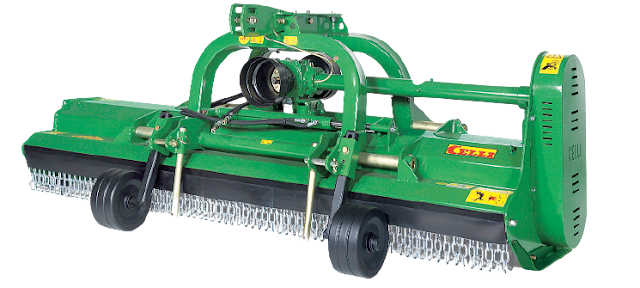There are a number of agriculture tools that are versatile and capable
of performing many other jobs in addition to their obvious jobs. One of them is
a power harrow, we all know the use of a power harrow in farming. It is frequently
used for seedbed preparation and weed control. However, its uses are not
limited to just seedbed preparation and weed control. This versatile
agricultural tool finds its uses in a variety of applications. You can use this
machine on small farms and beyond. We have put together some useful information
about various uses of a power harrow to help you understand its versatility.
Further details are given below:
Design of Power Harrow:
Before moving on to the applications of power harrow, it is necessary to understand the basic structure and design of a power harrow. A standard power harrow consists of a series of vertical tines that are connected to the horizontal axes. The job of these axes is to tilt the soil to an adjustable level. A power harrow also features a mesh roller that is situated behind the axes. The job of this mesh roller is to further tamp the soil and seal the surface. The surface you get after using a power harrow on it is not only suitable for seed bedding purposes, but it is also suitable for various other purposes.
The Operation of a Power harrow:
The rotation of vertical counter tines allows the machine to crumble big
clumps of soil and eventually offer a well-prepared and excellently levelled
surface that can be used for seed bedding and various other purposes.
Additionally, these tines also help you enhance soil ventilation
significantly. Keeping all the things mentioned earlier in mind, it is worth
mentioning that despite all this work by power harrow, there is no disturbance to
the natural composition and structure of the soil, which makes it a really useful
tool.
A power harrow also offers the option of various attachments, such as multiple types of rear rollers or accessories. These attachments can help you achieve the working depth and finishes of a surface according to your own requirements. There are two types of power harrows; fixed power harrows and folding power harrows. Modern power harrows offer long term productivity without consuming too much power.
Uses and Applications of Power Harrows:
You will now be fully aware of the design, working, capabilities, and usable attachments of a standard power harrow. Now it is time to look beyond these typical applications, once you start thinking beyond, you will figure out plenty of applications for a power harrow. We have also listed some of them below to help you:
- A power harrow can be used for the maintenance
and upkeep of racetracks for bikes, autos, equines.
- It can also be used for the upkeep of a rodeo
arena.
You can use a power harrow NZ wide or Australian wide for the surface preparation of a construction site and Medium duty offset discs ideal for all agricultural and cropping operations.



